Choosing which national parks to visit on our trip west was quite a challenge. We didn’t have enough time to visit all of them in one go, so we decided to choose a few that were more iconic. Badlands, Yellowstone, Grand Teton, and at least one of Utah’s five national parks – but which one? We settled on Arches National Park, since it was on our way to Colorado and, based on the descriptions, it seemed to have some spectacular rock formations.
Our trip began in late July and by the time we reached Arches, it was mid-August. By that point, between the heat and the crowds, we did begin to question our sanity. It’s hot – very hot – in August (see how we prepared ourselves and our LTV for the heat here) and the crowds at the national parks can be suffocating. But, the landscapes are so amazing that the crowds and heat are soon mitigated. We discovered that the parks are a lot less crowded if you go very early in the morning. Since many are open 24 hours a day, you can drive in early enough to catch a sunrise. Some folks prefer the other end of the day to enjoy spectacular sunsets, but may find the crowds linger with them!
During our visit to Arches National Park, the temperatures ranged between 90 and 110 degrees – that’s hot with or without humidity! We made a point to arrive at Arches at 6 am one August morning, not just to beat the crowds but to avoid the desert temperatures later in the day.
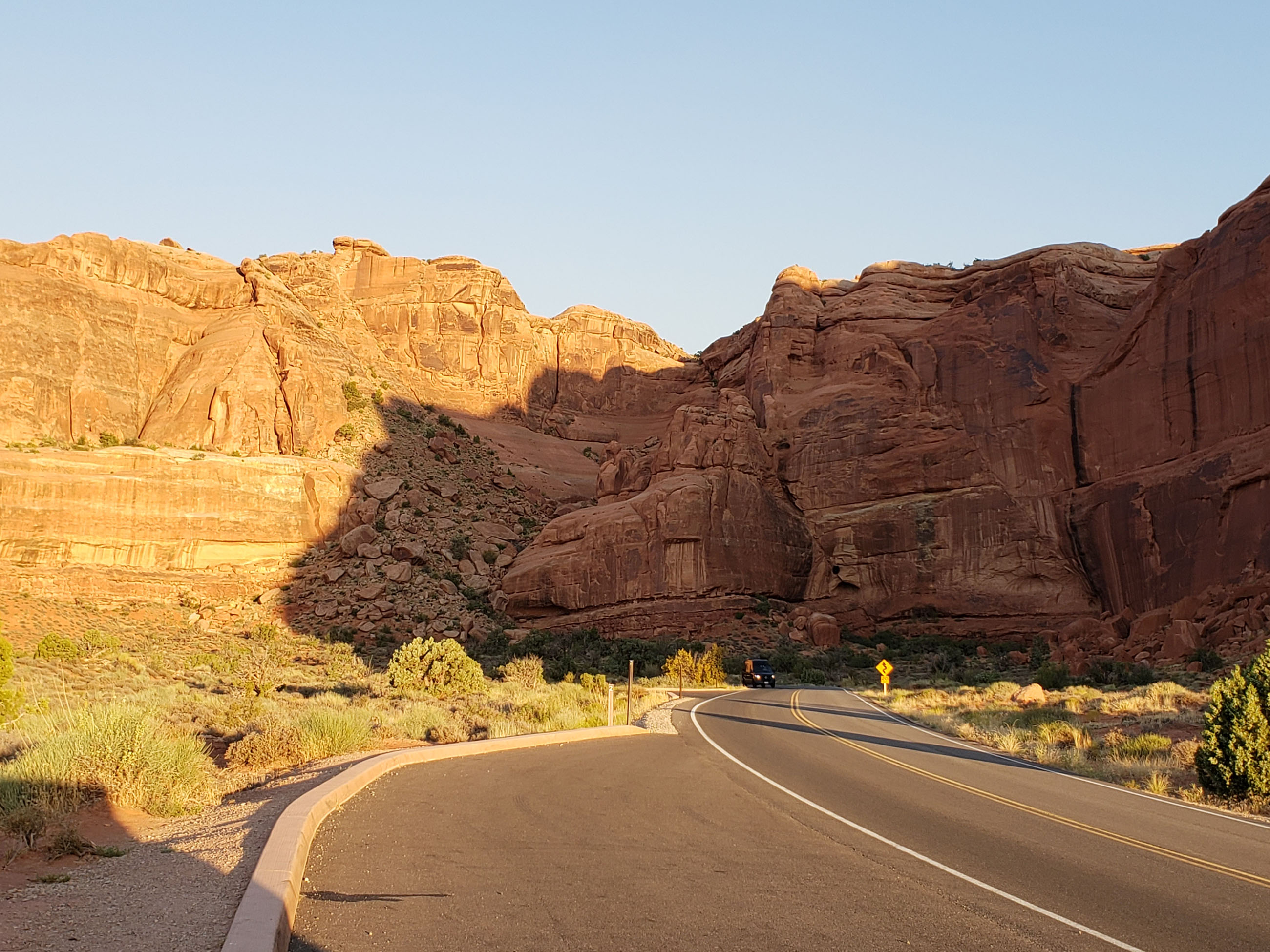
We hiked to a cluster of towering rock “fins,” which are formed when rock is eroded along parallel fractures. The rainwater washes away softer rock and leaves behind free-standing tall, thin walls of harder rock which look like a row of room dividers, or fins. Curious to see what it looked like between the fins, we climbed over a boulder between two fins.
Nothing could have prepared us for the spectacle. Towering cliffs rose up from the sand and reached into the sky. We stood looking up, turning slowly to marvel at the sheer rock faces that surrounded us. This “room” within the fins was carpeted with sand and opened to the clear blue morning sky above. Seemingly cut off from the desert outside, it was very quiet and the silence was powerful.
We wandered through the sandy room to get close to the magnificent rock face of the fins, touching the smooth surface and staring up at its sheer height. The sand was deep, like dunes on the beach, and we plodded along slowly up the dune. Just around the base of a massive rock fin we saw an amazing twisted arch joining two of the rock walls in the middle of the space. Behind the arch, the far wall of the canyon created a stunning backdrop as the sun streamed in from above, back-lighting the arch to great effect. Sand Dune Arch is a sight I will not soon forget. If this was any indication of what was to come, Arches National Park was a good choice to see the red rock features of the American West landscape.
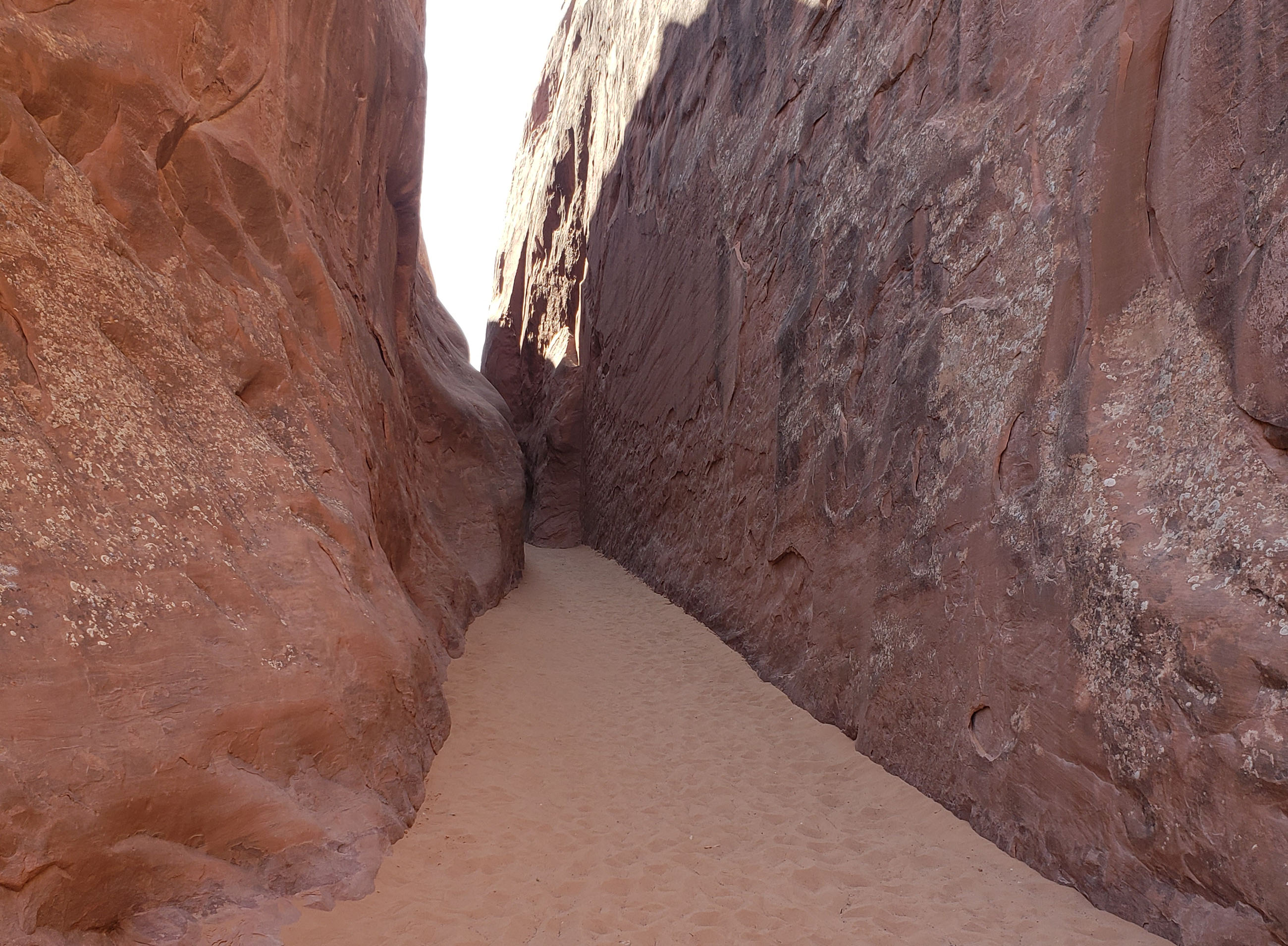
Where to Begin
Arches National Park is a pleasure to drive through. You can take your small RV and will find the roads are quite good, but parking at each feature is limited. In the early morning, there seemed to be plenty of open parking spaces and, since we were there so early, we enjoyed a leisurely pace moving from one area to the next without much concern about the crowds.
It’s a good idea to have a strategy to see the Park. There are over 2,000 arches as well as other rock formations. And though you don’t have to worry about the crowds in the early morning, you should be mindful that the desert heats up as the day progresses. We found it made sense to begin at the furthest feature you want to see and work your way back towards the entrance.
The area known as Devils Garden is pretty spectacular, and deep into the Park. With seven different arches along its trails, it’s a great hike to see a lot in one location. It is also important to see it in the early morning since there is almost no shade once the sun begins to rise. By 10 am it was already quite hot and shade was almost non-existent. One of the Park’s most iconic arches, Landscape Arch, is located in Devils Garden. As the longest open span arch (306 feet), it is a must-see feature.
The trail is considered “easy” at just under two miles with mild hills – worth the effort even if you are not a hiker. Some of the other arches in Devils Garden, like the Double O, Dark Angel, and Navajo, require more hiking experience and are classified as “difficult” hikes. Be sure to check the hiking guide at the Visitor Center to map hikes within your experience range.
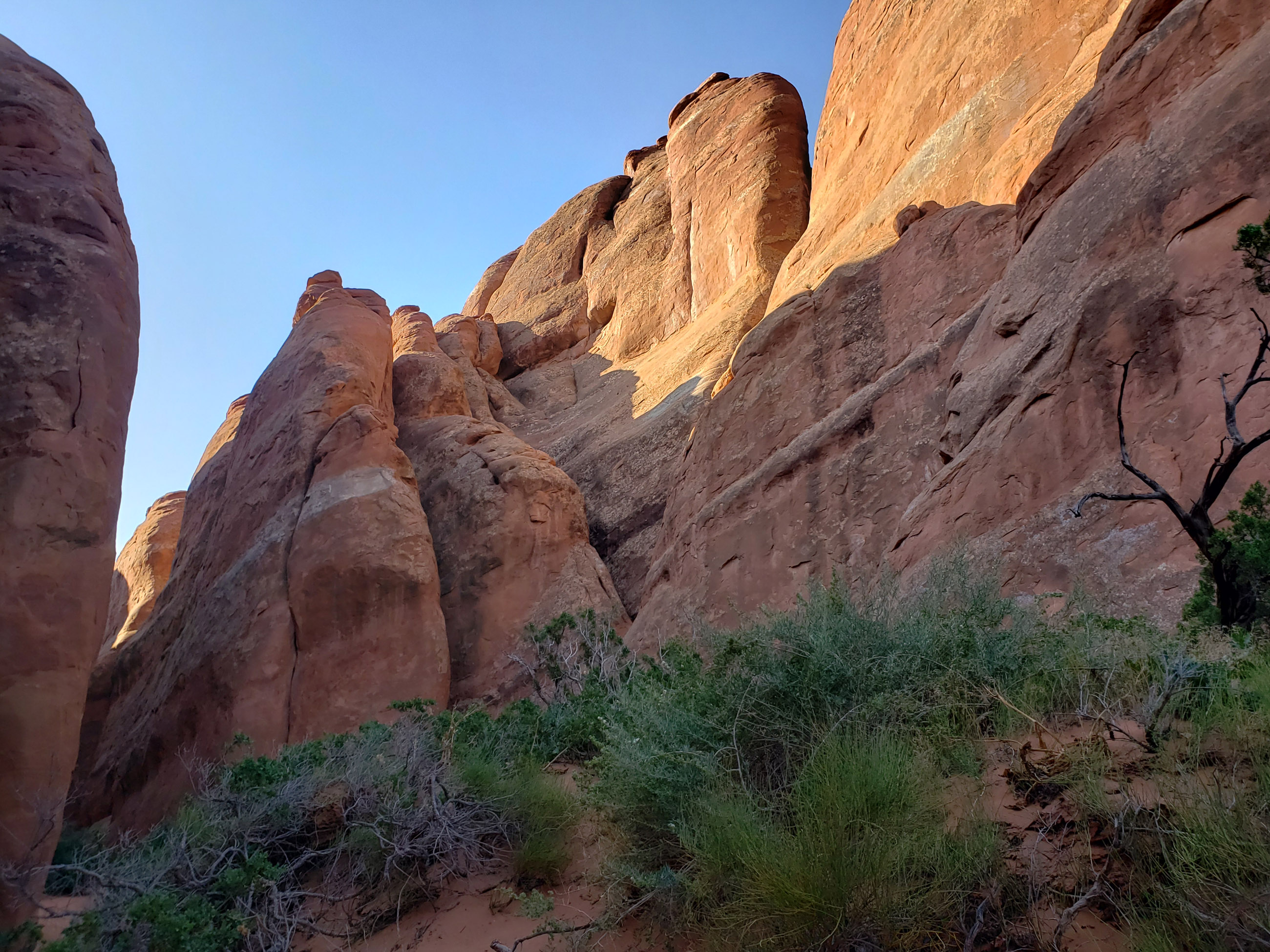
Along with Devils Garden, there were so many other features in the Park that captured our imaginations. One example is a formation that is not an arch at all, known as Balanced Rock. It looks like a huge boulder atop a column of eroded sandstone, and truly seems to be balanced there. At over 3,500 pounds, Balanced Rock is an amazing sight. The hike in to see it up-close is along an easy path just a few hundred feet from the parking area. Balanced Rock is one of the first formations you’ll come to along the road and quite near to the Park entrance.
Or perhaps you’ve seen photos of the most famous arch in the Park, called Delicate Arch. A 60-foot tall formation with a 32-foot wide opening makes it quite an impressive sight standing in the desert sun. A steady uphill trail will get you an up-close view (3 miles round trip), but there is an easy viewing point just 100 yards from the parking lot if you are not up to the longer hike.
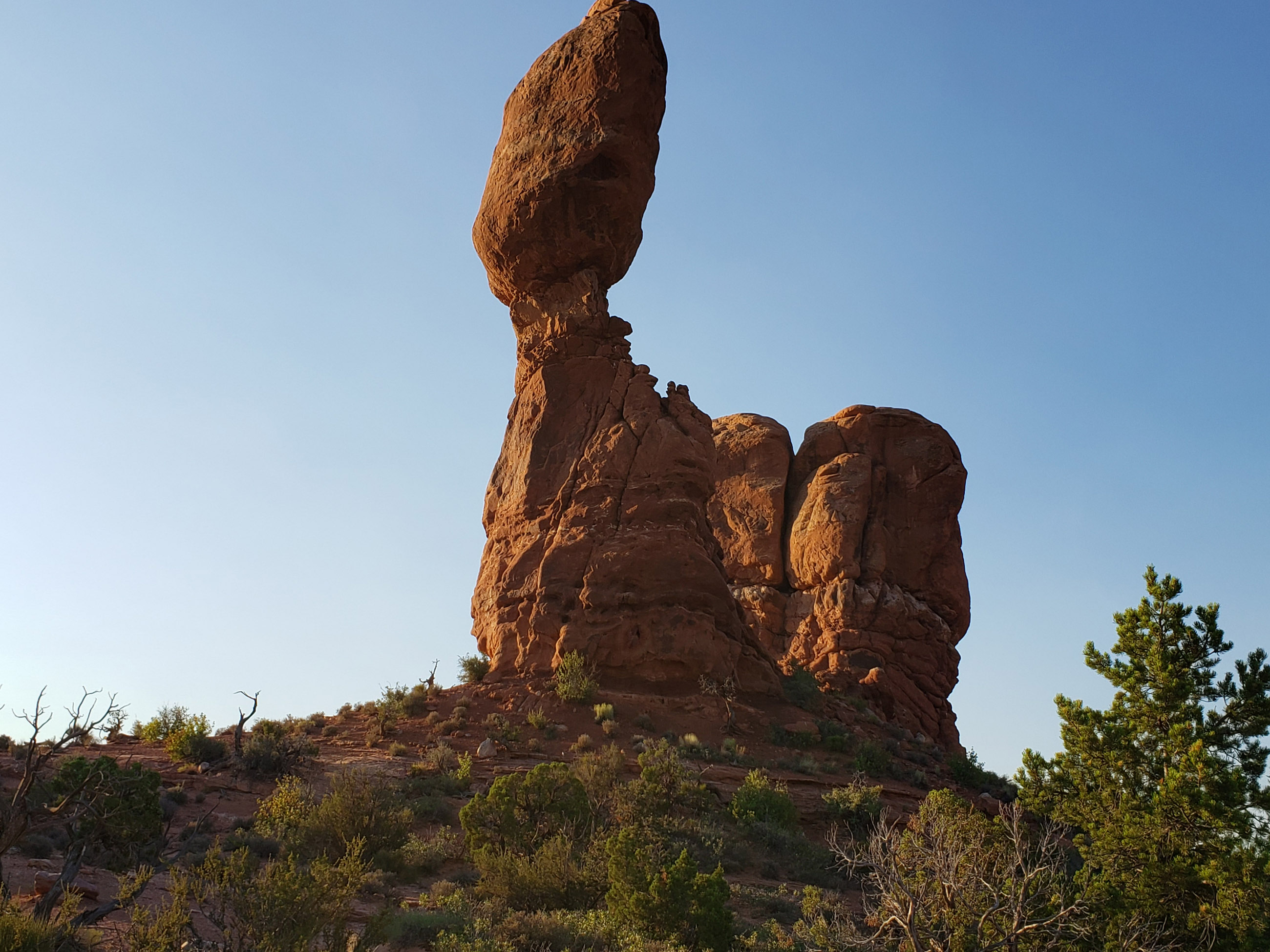

Perhaps the best collection of large arches can be found in the Windows section of the Park. There you will find the magnificent Double Arch, which can be viewed from the parking lot or via an easy walk if you want to get closer. In fact, most of the arches and formations in this area require less strenuous hiking.
Another hike took us to Sky Arch, which sits high above the desert floor. It can be seen from the edge of the parking area, or more clearly from the well-trod trail. After visiting several arches and formations, we knew that a short hike would give us more spectacular views, so instead of viewing Sky Arch from the main trail, we followed a less defined trail for several hundred yards. Standing almost under the cliff that supports Sky Arch, we were surrounded by fallen boulders, scrub trees, brush, and lots of sand. It was very quiet in the early morning, and the sight was serene with the sun beaming through the arch and lighting the canyon around us.
Even if you only drive through the Park, you’ll marvel at the scenery all along the road, including huge cliffs, bizarre eroded rock formations, and vast expanses of the petrified desert (yes, it is actually petrified sand!). Park Avenue and Courthouse Towers line the paved roadway, offering spectacular rock walls and formations to view from the air-conditioned comfort of your vehicle. Each curve offers another remarkable view. It is a photographer’s playground!
If you love stargazing, Arches is certified as an International Dark Sky Park, and is a beautiful setting to enjoy the dazzling night sky. If you can manage to get a campsite reservation in the Park, you can enjoy the night sky close to your RV! Check the Visitors Center for scheduled Ranger programs for viewing the night sky.
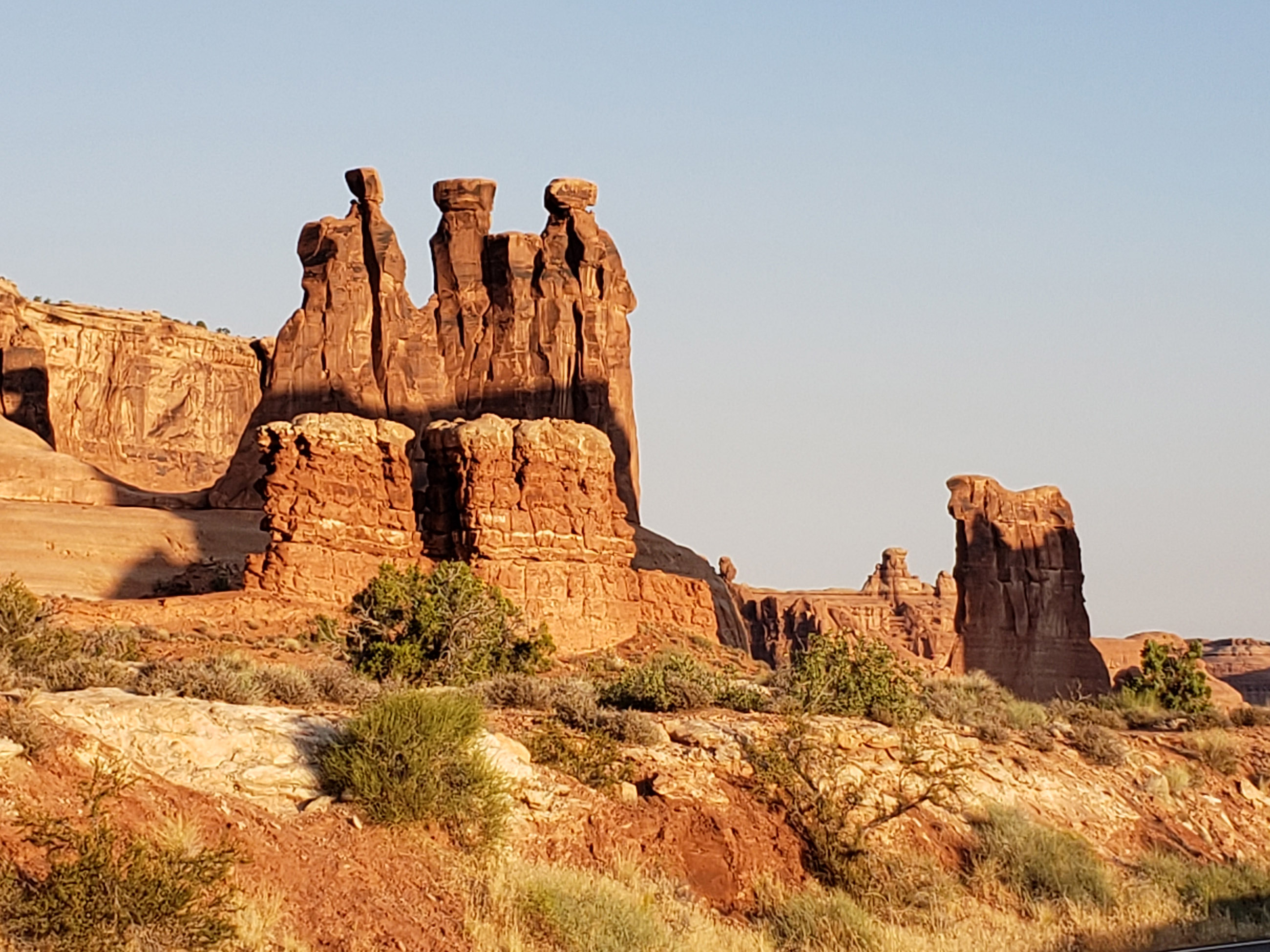
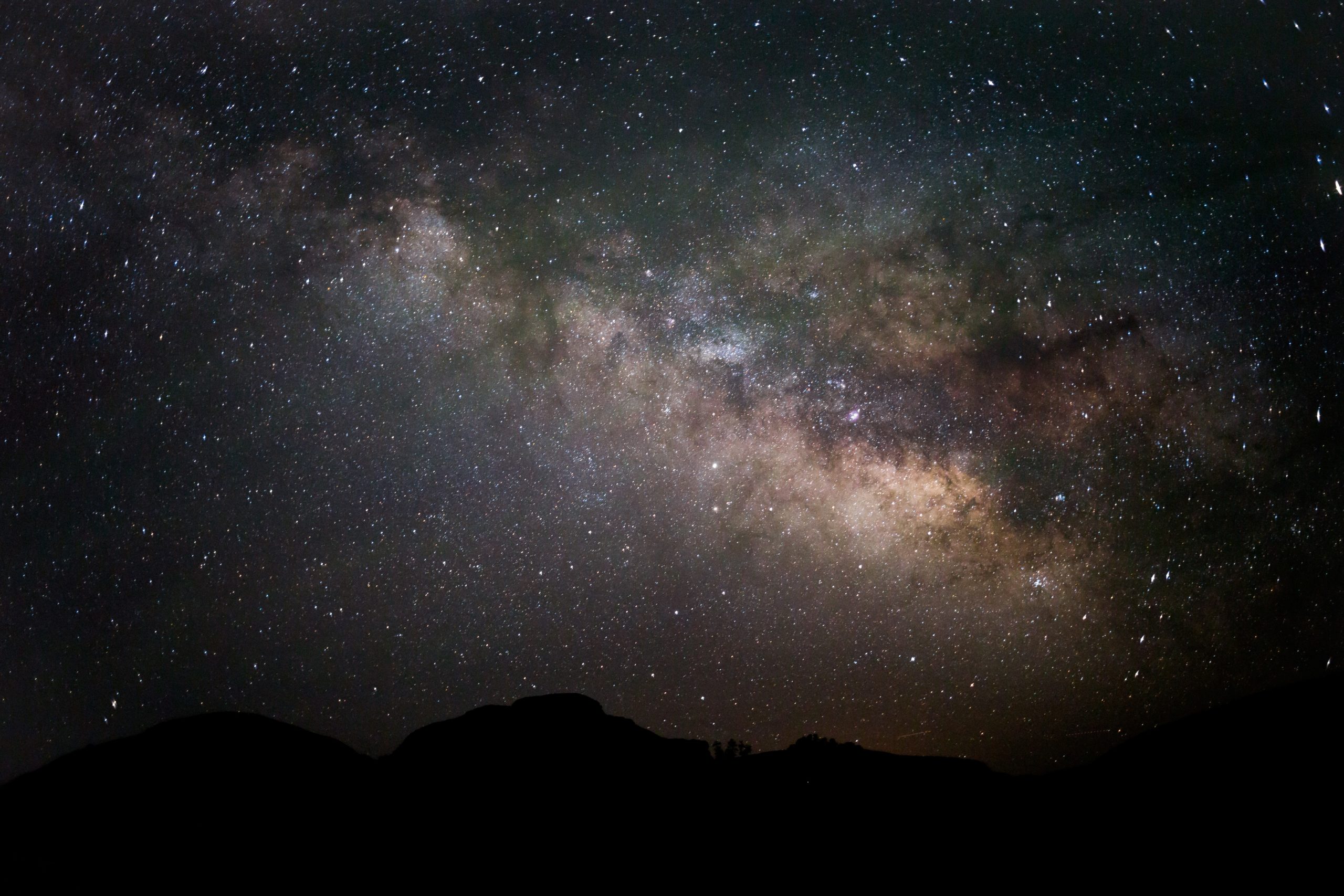
Visitor Center and Other Tips
Arches National Park Visitor Center is located near the Park’s entrance gate. Inside you will find a well-stocked gift shop as well as knowledgeable rangers to help you map out your visit. An exhibit on how the rock formations were sculpted is quite interesting and will enhance your experience. Check for their hours of operation online; winter hours are more limited than summer hours. You can also find water spigots and restrooms open 24 hours a day outside the Visitor Center.
The entrance road from the highway is rather short, so traffic tends to back up to the highway early in the day. Getting to the Park early is recommended. You can also check the website for announcements about road construction and any areas that might be closed, as well as view a live traffic cam.
Even in the early morning, you need to prepare yourself for the desert heat. Obviously, wear light-colored and lightweight clothing, but also wear a good sun hat, lather up with sunscreen, and take your sunglasses, a map, and a couple of bottles of water. It is dry and hot even at 7 am.
Where to Stay
Arches National Park offers camping at Devils Garden Campground. There are toilet facilities but no electrical hookups, shower facilities, or dump stations. Small RVs (up to 40 feet in length) can boondock there. Reservations are recommended since it is almost always booked up from spring through fall. Winter is first-come, first-served.
Because there is such high demand for the Park campground, we opted for a nearby RV park in Moab. There are several options for RV camping and we chose the Moab KOA Holiday. The setting here offered lovely views of towering red cliffs on one side and a distant mountain range on the other. The downtown area and the National Park were a short drive away. Set into a gentle slope, the Moab KOA offers a range of amenities including a resort-style pool and excellent laundry facilities. Of course, they offer the typical KOA selection of sites, most of which offer full hookups.
We found it a challenge to level our small RV on the sloping site since we do not have auto-levelers. There were a few small trees to provide a bit of shade, but the campsites are somewhat exposed to the sun. Situated close together like most campgrounds of this type, we were flanked by a pop-up camper on one side and a small trailer on the other. Surprisingly, even with the desert heat, there were quite a few tent campers!
It is a short drive to downtown Moab, and Enterprise Rent-a-Car is located just a few blocks from the campground, which made getting a Jeep for our adventure easy. The downtown is a riot of color with a very relaxed and casual vibe. The main street is lined with restaurants, bike, raft, and tour services, and gift shops. The Moab Visitor Center is also located right on the main street.
We stopped for lunch at the Moab Diner, an historic establishment renovated to resemble a ’50s style diner. Great food and very friendly service made us feel right at home. I highly recommend the green chili burger!
Don’t forget to bring:
- sunscreen
- comfortable hiking boots or shoes
- good sun hat
- telescope for stargazing
- camera for capturing the moment (don’t forget the giant beach chairs!)
- bottled water
- binoculars for viewing wildlife
The National Parks are a great way to see the diverse landscapes of this country, and offer a glimpse at what the land looked like before heavy development. They are also an opportunity to learn more about the geology, wildlife, and history of the US. Try including one or two on your next trip!


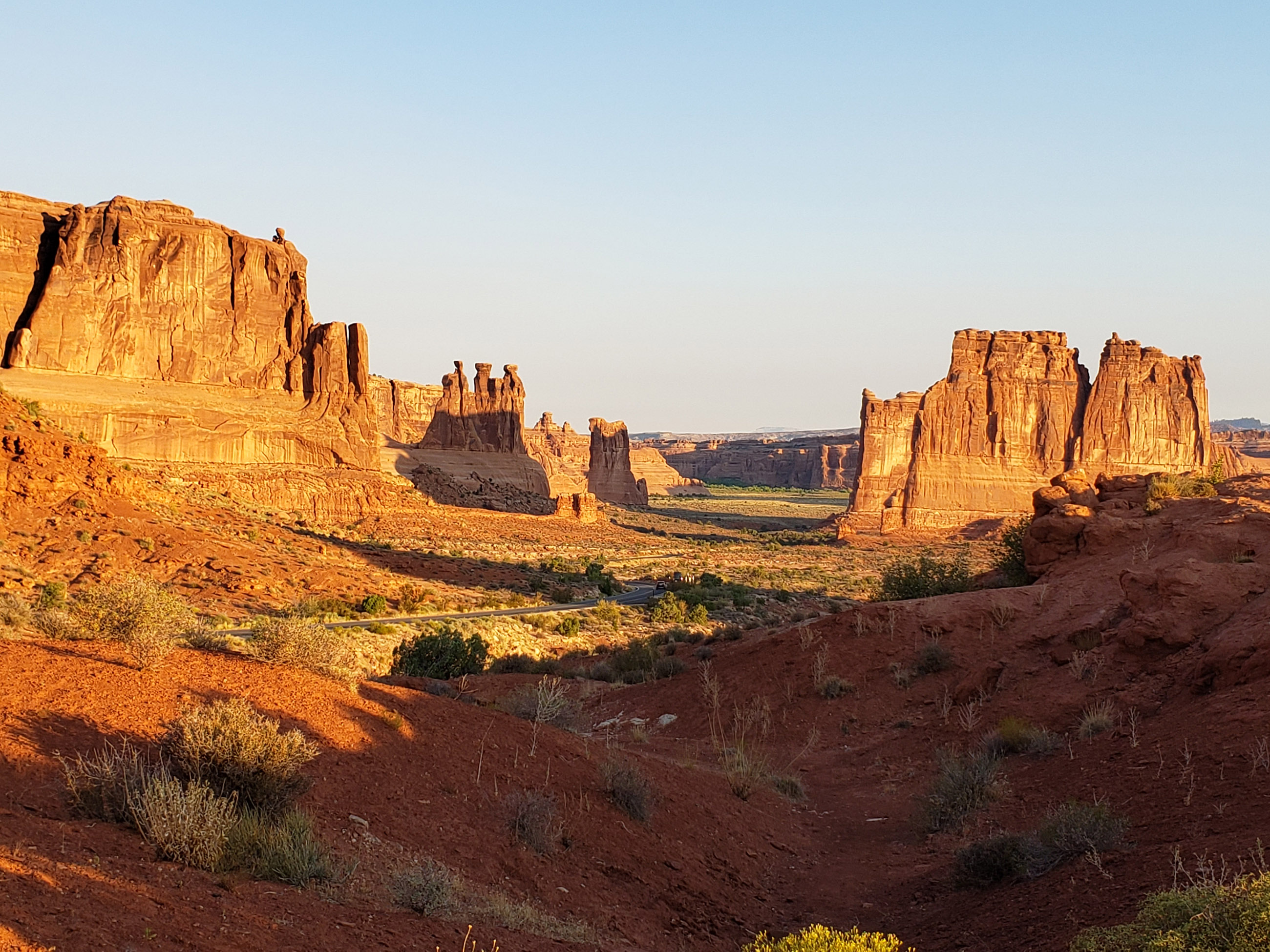
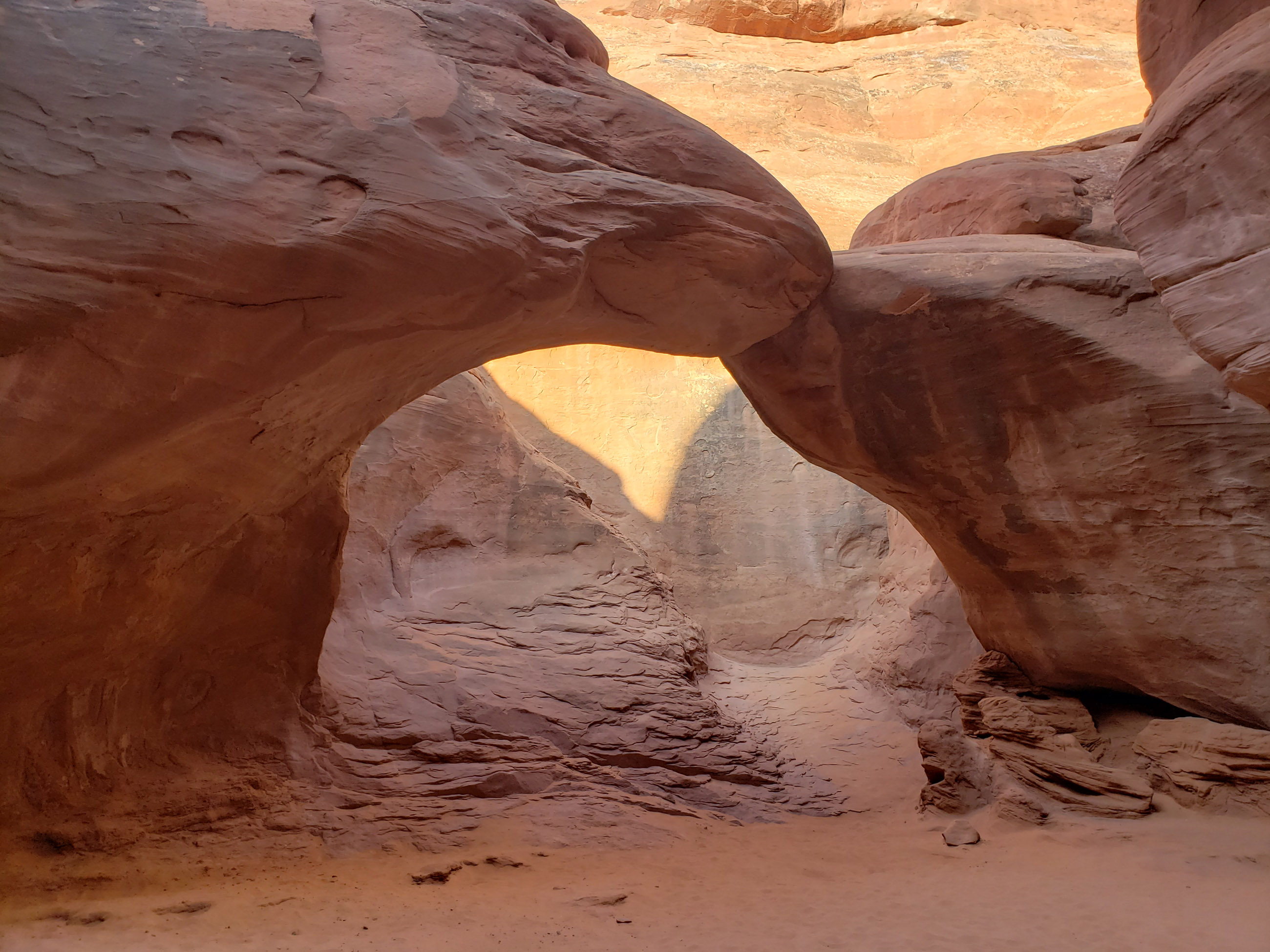
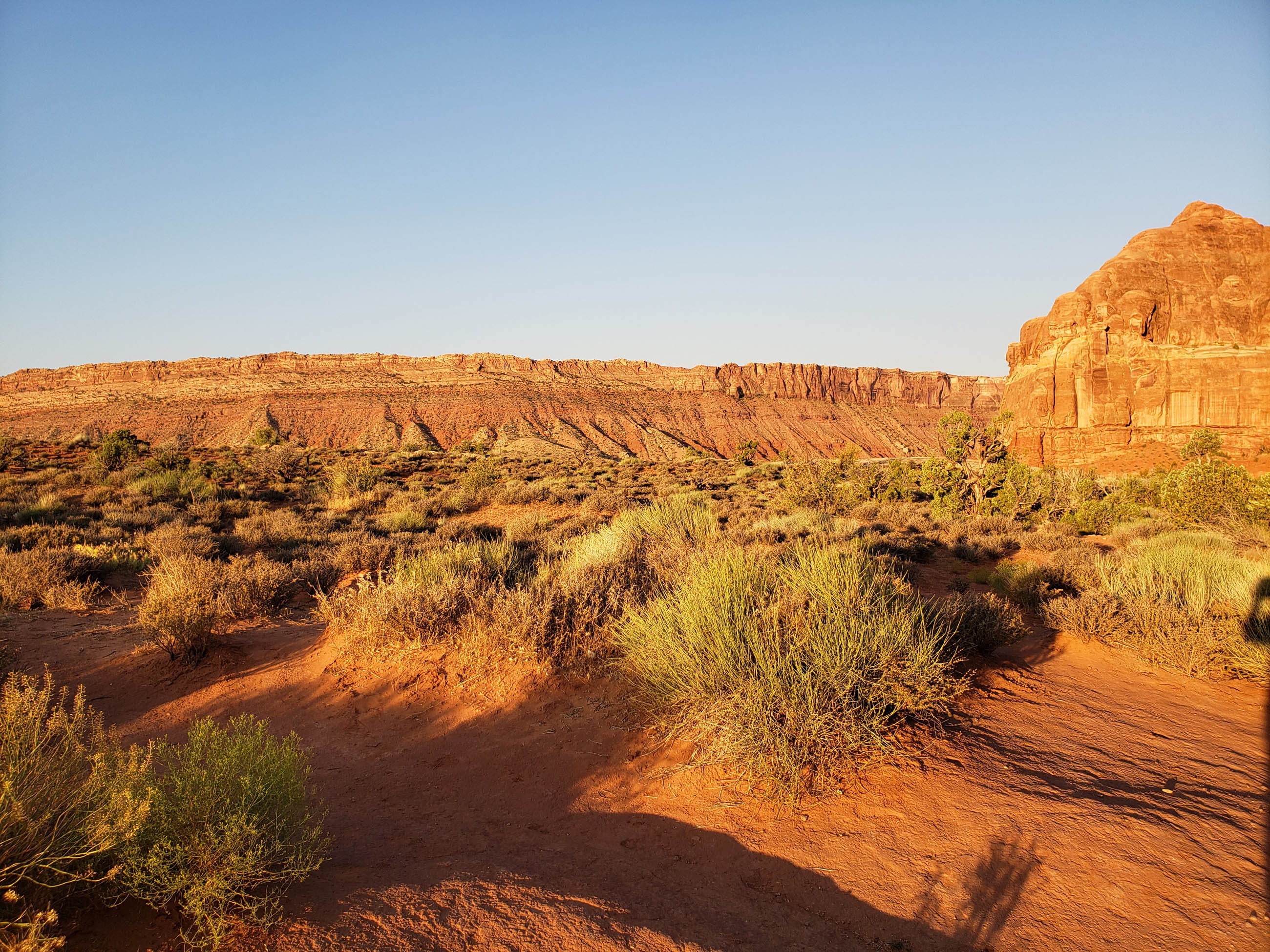


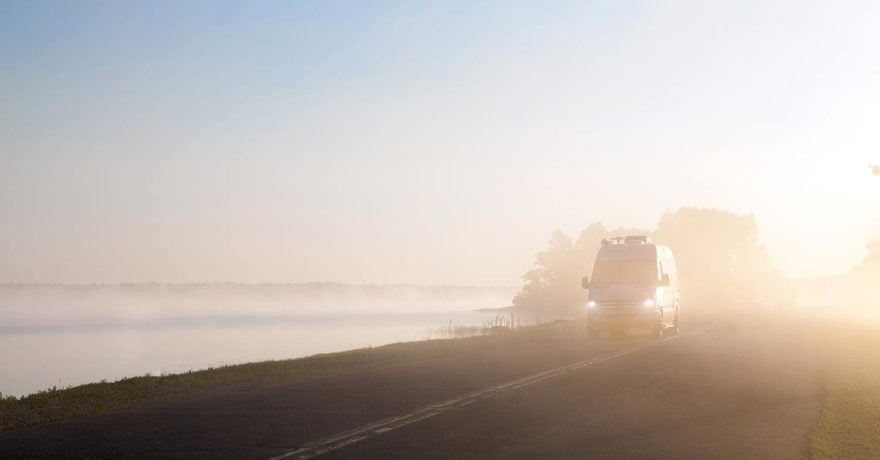
Comments